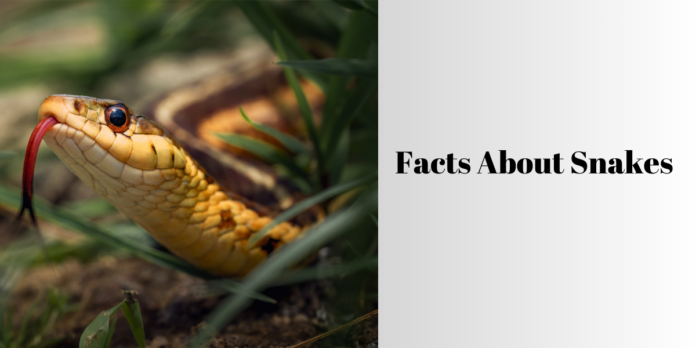Facts About Snakes – Lots of people do not really get snakes, which is a bummer. However, we are here to tell you 10 awesome facts about snakes and let you know why snakes are awesome and need our help.
Facts About Snakes
Here in this section we have discussed 10 topmost facts about snakes:
Snakes have a really big family
There are about 3,789 types of snakes, and they are the second biggest group of reptiles after lizards. They are split into 30 families and lots of subfamilies. Around 140 of them live in Australia.
They get their energy from the sun:
People might say snakes are “cold-blooded,” but that is not quite right because their blood is not actually cold. The correct term is “ectothermic,” which means their body temperature changes with the outside environment. Unlike mammals and birds that can control their body temperature inside, snakes need the sun or other heat sources to warm up.
Not every snake lays eggs:
In school, they might have told you that reptiles lay eggs, but here is the twist. While about 70% of snakes lay eggs, some do not. Snakes in really cold places have babies instead of eggs because the eggs wouldn’t make it in the chilly weather.
Snakes skip the eyelids:
Ever get that spooky feeling from snakes? Well, they do not blink because they do not have eyelids! They have to snooze with their eyes wide open. Instead of eyelids, they have a super-thin cover on each eye for protection, and it is called ‘brille,’ which is like saying glasses in German.
They use their tongues for smelling:
Snakes have noses, but they do not use them for smelling. They have evolved to smell using their tongue and a special part called Jacobson’s organ in the roof of their mouth. Their smell is so good it is like “smelling in stereo.” With a forked tongue and lots of receptors, they can pick up different smells.
Snakes eat differently:
When snakes munch on their food, they cannot chew because they are built that way. Their jaws are super flexible, so they can gulp down animals that are 75% to 100% bigger than their own head. Once they swallow, the chemicals in their stomach do all the hard work to break down the food.
Snakes have 5 ways to move:
Think about a snake sliding through the grass. What do you see? Probably the famous s-shaped movement, right? That is the usual way snakes move, known as lateral undulation. But guess what? Snakes have four more ways to get around.
Some snakes in trees use a different kind of movement that uses much energy, called concertina. Moreover, when a snake tries to slip away on a smooth surface, there is a special way they move called slide pushing.
The quickest snake can go as fast as 12 miles per hour
Snakes can be speedy, and the black mamba holds the record. It can zip along at 12 miles per hour.
The longest snake is the reticulated python
You know what? The longest snake is more than 6 meters long! It’s called a reticulated python.
Snakes can move their jaws easily
Snakes have jaws that can bend a lot, so they can munch on animals larger than them. After eating, their strong stomach acid helps them digest the food.
Some FAQs
What makes snakes special?
Snakes are special because they have something called Jacobson’s organ in their mouth’s roof. This lets them smell using their tongues. Moreover, because their tongues are split, they can use many parts to catch different smells.
What are 5 amazing things about snakes?
Snakes, part of the Serpentes group, are reptiles without legs, voice, external ears, or eyelids. They have just one working lung and a long, slim body. There are around 2,900 snake species, and most of them live in warm places. Their skin is covered in scales.
Which snake is the biggest?
The green anaconda takes the prize for being the biggest snake globally. It can stretch up to 30 feet (9 meters) long and weigh a whopping 550 pounds (227 kilograms). To imagine its size, if you line up about five ten-year-olds from head to toe, they would be around as long as this massive snake.

















